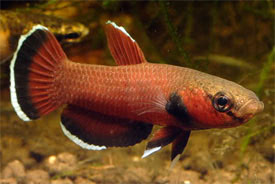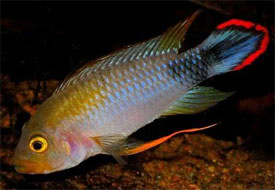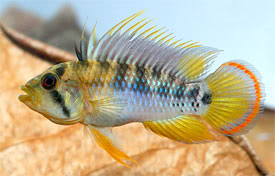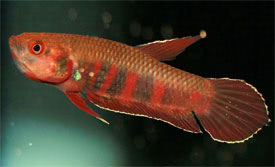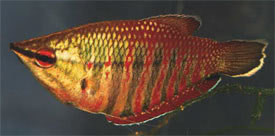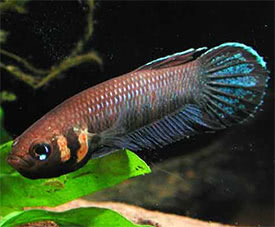
 Magyarul / Hungarian
Magyarul / Hungarian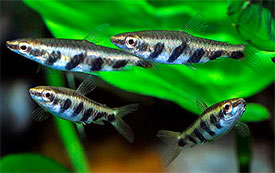
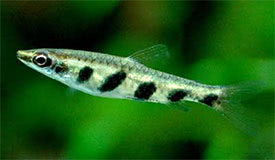


- Scientific name: Nannostomus espei
- Synonyms: Poecilobrycon espei
- Common name: Barred Pencilfish, Espe's Pencilfish
- Group: Characins
- Habitat: South America; Guyana, endemic to the Mazaruni River system.
- Size: 3-4 cm
- Biotope: Inhabits slow-flowing blackwater rivers, and swampy areas, particularly with dense aquatic vegetation and with submerged woody structures.
- Social behavior: A very peaceful schooling fish, but not an ideal candidate for a community tank, as it is small and timid. The males might nip each others fins. They swim in the middle and top areas of the aquarium, so bottom-dweller tankmates would be a good choice.
- Diet: Omnivorous; Micropredator, feeding on tiny invertebrates in nature. In aquarium they accept dried foods and other small live and frozen foods.
- Breeding: Hard
- Tank: Minimum 50 litres
- Population: 8-10 fish for 50 litres
- Decoration: They require a densely planted tank with dark substrate. The tank can be decorated with driftwood branches and dried leaf litter.
- Temperature: 22-28 °C
- pH: 4-6.5
- Hardness: 1-5 NK°
- Lifespan: 3-5 years
Description: Nannostomus espei has five permanent dark comma-shaped blotches on its body, while other species of the genus have horizontal stripes on their flanks. The fish possess an adipose fin (not all pencilfish do), and as other pencilfish it has a small terminal mouth. Barred Pencilfish is best kept in a larger group, ideally 10 or more, as this way any aggression is spread between individuals, and the fish are bolder and exhibit more natural behaviour. Unfortunately this species is rare in the hobby, and also quite expensive to buy. Adult males are more intensely-patterned, have a few tiny red stripes on their anal and caudal fin, and are usually slimmer than females.
Breeding is possible in aquarium, in a densely-planted tank a small number of fry may appear without intervention, but of course it is rare. It is best breed them in a smaller, separated aquarium, in extremely soft and acidic water. An important part of getting these fish to breed is food: a variety of live foods are necessary for females to produce eggs. Unlike most of their congeners this species deposits its eggs in single batches on the underside of plant leaves, so some broad-leaved aquatic plants should be added to their tank. Breeding is possible in pairs or in a smaller group of one or two males and several females. It is often hard to find a suitable pair among the group. Once the eggs are noticed in the aquarium, the adult fish should be removed, as they will eat the eggs. The eggs hatch in 24-36 hours, and the fry become free-swimming in 5-6 days. The fry are very tiny and should be fed with sufficiently small live or dry foods. Once the fry are large enough they can be fed with newly hatched Artemia nauplii, or similar sized live foods.











